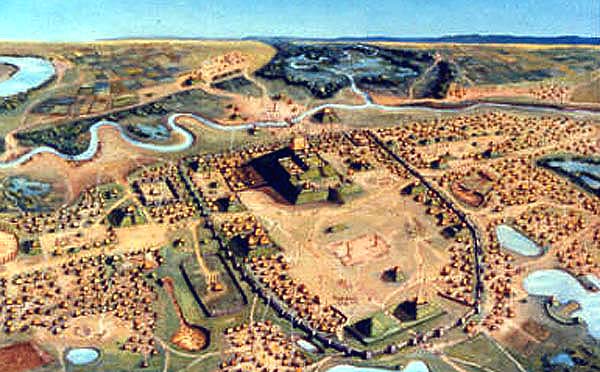Why Did Cahokia, One of North America's Largest Pre-Hispanic Cities, Collapse?
At its peak around the turn of the first millennium, Cahokia, a city in what is now Illinois, was home to as many as 20,000 people. Members of North America’s Mississippian culture, Cahokia’s residents constructed enormous earthen mounds used alternatively as residences, burial grounds, meeting places and ceremonial centers. Per the Washington Post’s Nathan Seppa, the bustling community included farmers tasked with cultivating maize, artisans who crafted ornate clay vessels and sculptures, and even ancient astronomers who tracked the passage of time with the help of Stonehenge-like timber circles.
Cahokia grew from a small settlement established around 700 A.D. to a metropolis rivaling London and Paris by 1050. But just 200 years later, the once-thriving civilization had all but vanished, abandoning its patchwork collection of monumental earthworks for still-unknown reasons.
New research appears to rule out at least one oft-cited explanation: ... that Cahokia’s inhabitants overharvested wood from the surrounding forests, sparking erosion and flooding that rendered the area uninhabitable. Upon studying soil samples collected near a creek at the site, Caitlin Rankin, an archaeologist at the University of Illinois at Urbana-Champaign was surprised to find no traces of sediments associated with flooding. If the city’s ancient residents had, in fact, driven its ecosystem to doom through deforestation, the swath of low-lying land in question would almost certainly have flooded.
“We were able to piece together a Native American presence in the area that endured for centuries,” said A.J. White, an archaeologist at the University of California, Berkeley. Lopinot, one of the researchers who first raised the land overuse theory, tells National Geographic that he welcomes Rankin’s new take on the topic.
Ultimately, Neal Lopinot of Southern Illinois University Edwardsville, adds “Cahokia’s decline wasn’t something that happened overnight. It was a slow demise. And we don’t know why people were leaving. It might have been a matter of political factionalization, or warfare, or drought, or disease—we just don’t know.”
https://www.smithsonianmag.com/smart-news/why-did-cahokia-one-largest-pre-hispanic-cities-north-america-collapse-180977528/
Cahokia Mounds, Illinois – Largest Archaeological Site in North America
https://www.legendsofamerica.com/il-cahokia/

